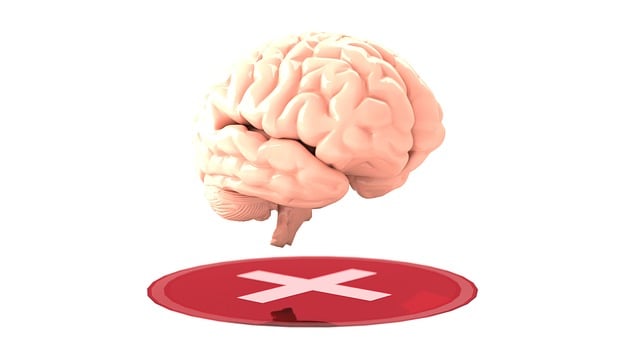Children's mental health apps targeting trauma, anxiety, and mood disorders require strategic marketing emphasizing specialized, accessible therapy tailored to their age group. By combining engaging content with evidence-based practices, these apps offer early intervention solutions to improve long-term mental health outcomes. Effective promotion should highlight accessibility, discretion, and positive family impacts. Through partnerships with schools, healthcare providers, and cultural organizations, the app can reach diverse audiences while leveraging social media for targeted advertising. Measuring success through engagement rates, downloads, and user retention, along with qualitative feedback, ensures strategies meet the unique needs of traumatized children.
In today’s digital era, mental wellness apps offer a promising solution for addressing children’s unique mental health needs, especially regarding trauma therapy. This article provides a comprehensive marketing strategy development guide for maximizing app reach and impact. We explore key aspects such as understanding the target audience—children and their caregivers—and crafting compelling messaging that highlights the benefits of trauma therapy apps. Additionally, we discuss distribution channels, strategic partnerships, and measurement techniques to ensure your campaign’s success in promoting therapy for children trauma.
- Understanding the Target Audience: Children and Their Unique Mental Health Needs
- The Role of Parents and Caregivers in Promoting Digital Therapeutic Solutions
- Crafting Compelling Messaging: Communicating the Benefits of Trauma Therapy Apps
- Distribution Channels and Partnerships for Maximum Reach
- Measuring Success: Evaluating the Impact and Effectiveness of Your Marketing Strategy
Understanding the Target Audience: Children and Their Unique Mental Health Needs

Children, with their developing minds and unique experiences, present distinct mental health needs that require tailored approaches. Marketing a mental wellness app for this demographic involves understanding their specific challenges, such as trauma, anxiety, or mood disorders, which often manifest differently than in adults. According to research, early intervention is crucial in addressing these issues, fostering better long-term mental health outcomes.
Targeted marketing strategies should emphasize the app’s ability to provide accessible therapy for children, focusing on engaging and age-appropriate content that encourages self-reflection and promotes skills like stress management and resilience building. By catering to this niche audience, the app can contribute to increasing mental health awareness, ensuring children receive the support they need in a format that resonates with their unique psychological landscape.
The Role of Parents and Caregivers in Promoting Digital Therapeutic Solutions

In today’s digital era, parents and caregivers play a pivotal role in promoting and adopting mental wellness apps for children, especially those dealing with trauma. These apps offer accessible and engaging therapy solutions that can significantly impact a child’s emotional well-being. By integrating evidence-based practices, such as conflict resolution techniques and stress management tools, apps cater to the unique needs of young users. Caregivers can guide their children through these digital therapeutic experiences, fostering open communication about emotions and providing much-needed support.
When introducing therapy for children with trauma, parents and caregivers must consider the app’s ability to offer personalized, age-appropriate content. Stress reduction methods tailored to kids can include interactive games, mindfulness exercises, and cognitive-behavioral techniques. Engaging in these activities together can strengthen the bond between caregiver and child while navigating the healing process. Effective marketing strategies for such apps should emphasize the accessibility, discretion, and positive impact on family relationships, making them an appealing solution for modern families seeking holistic wellness.
Crafting Compelling Messaging: Communicating the Benefits of Trauma Therapy Apps

In crafting compelling messaging for mental wellness apps focused on trauma therapy for children, it’s essential to highlight the unique benefits and positive outcomes that these applications offer. Emphasize how these apps provide accessible and engaging tools for emotional healing processes, tailored specifically to a child’s needs. By combining interactive elements with evidence-based practices, such as social skills training and stress management techniques, these therapy apps create a nurturing environment where children can learn, grow, and develop coping mechanisms.
The messaging should also address the often-overlooked aspect of trauma healing in childhood. Using gentle, reassuring language, communicate that these apps are designed to help children process their experiences at their own pace, fostering resilience and emotional intelligence. Through gamification, storytelling, or other creative approaches, these therapy apps make emotional healing processes fun and less intimidating, allowing kids to build essential social skills and better manage stress in a supportive digital space.
Distribution Channels and Partnerships for Maximum Reach

To maximize reach and impact, a mental wellness app targeting children’s trauma should leverage diverse distribution channels and strategic partnerships. Social media platforms like Instagram and Facebook, with their vast user bases and targeted advertising capabilities, are essential for spreading awareness about the app’s benefits. Collaborating with schools, pediatricians’ offices, and community centers can further extend accessibility; these entities can help integrate the app into existing support systems and refer users who might benefit from its therapy for children trauma features.
Partnerships with mental health organizations, non-profits focused on child welfare, and cultural groups that emphasize well-being can also amplify the app’s message. Implementing a community outreach program that involves these partnerships ensures tailored messaging that resonates with different audiences, including those from diverse cultural backgrounds who may require special consideration in terms of self-awareness exercises and addressing unique challenges within their communities. Cultural sensitivity in mental healthcare practice is paramount for building trust and ensuring effectiveness.
Measuring Success: Evaluating the Impact and Effectiveness of Your Marketing Strategy

Measuring success is a vital component of any marketing strategy, especially when promoting mental wellness among children who have experienced trauma. By evaluating the impact and effectiveness of your campaign, you can ensure that your efforts are making a tangible difference in their lives. One way to do this is through tracking key performance indicators (KPIs) such as engagement rates, app downloads, and user retention over time. For instance, monitoring the number of children enrolled in therapy programs or participating in social skills training sessions directly tied to your marketing can provide strong data-driven insights into the success of your strategy.
Additionally, qualitative feedback from users can offer valuable perspectives on how your mental health awareness initiatives are resonating with families and caregivers. Encouraging user reviews and testimonials can highlight the positive impact of your app and related services, such as improved emotional well-being promotion techniques. This dual approach—combining quantitative data with qualitative feedback—will enable you to refine your marketing strategy, ensuring that it effectively addresses the unique needs of children who have experienced trauma while providing therapy for children’s mental wellness.
In developing a marketing strategy for mental wellness apps, specifically tailored to address trauma in children, understanding the unique needs of this audience is paramount. By recognizing the crucial role parents and caregivers play in facilitating digital therapeutic solutions, we can craft compelling messaging that highlights the benefits of trauma therapy apps. Utilizing strategic distribution channels and building partnerships will ensure maximum reach, while meticulous measurement of success through impact evaluation will help refine and optimize marketing efforts. Ultimately, this integrated approach aims to enhance accessibility and effectiveness of therapy for children traumatized, fostering their mental wellness in a digital age.









